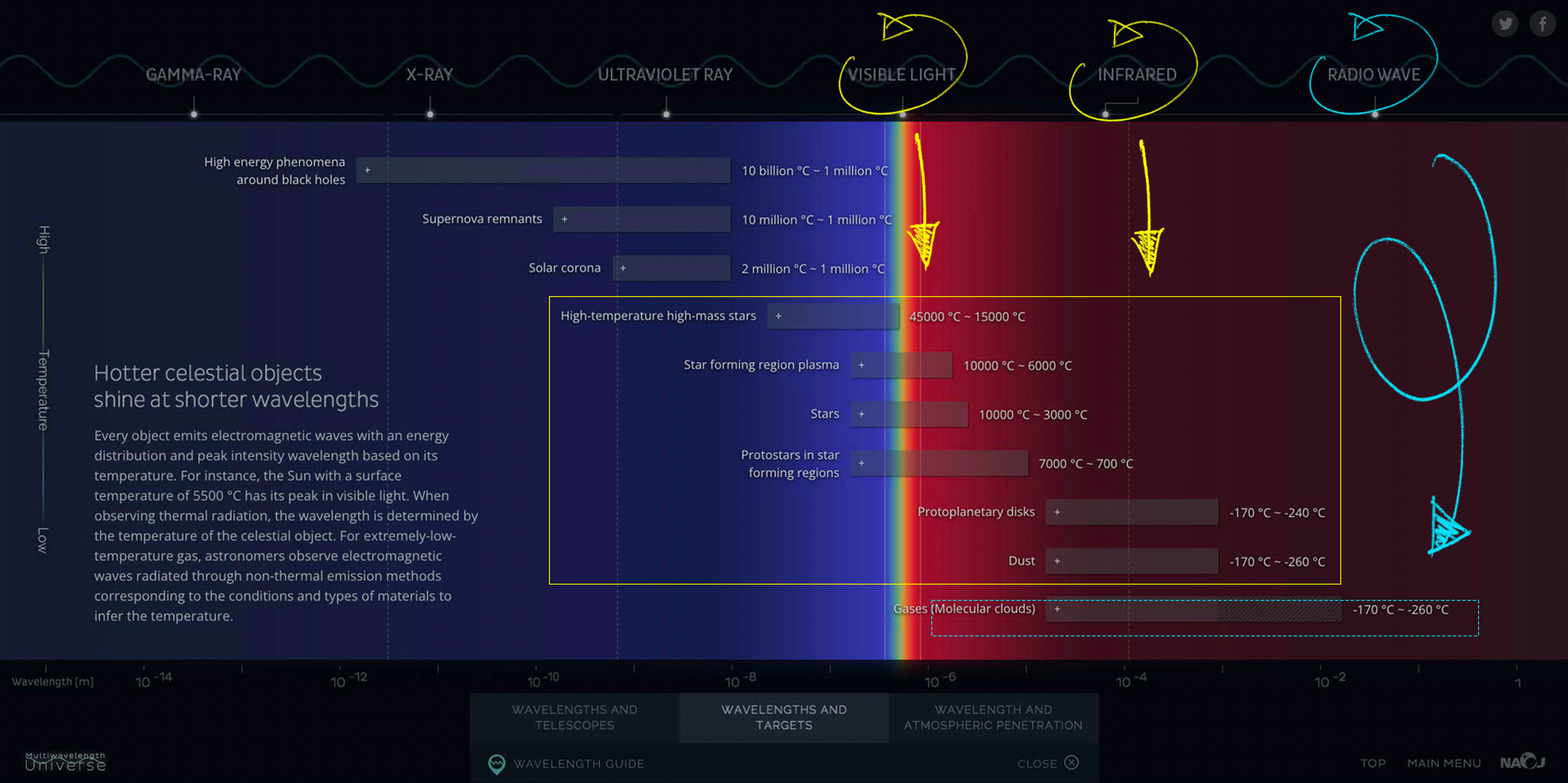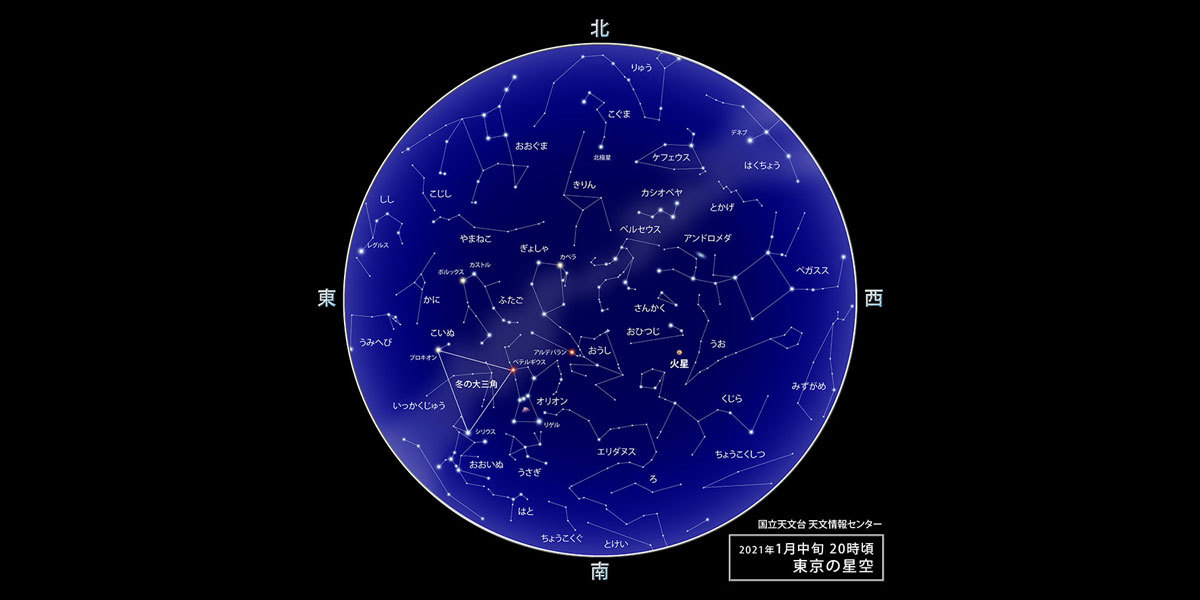F A Q
for Young Astronomers

F A Q
for Young Astronomer

Where is the Subaru Telescope located?
The Subaru Telescope is located in Hawai‘i in the middle of the Pacific Ocean. It was built near the summit of a mountain called Maunakea on the Big Island of Hawai‘i, which is the biggest island among 130 islands in Hawai‘i. Maunakea stands at 4,205 meters above sea level, so the Subaru Telescope is often higher than the cloud level for typical trade wind patterns.

Why was Maunakea selected for the Subaru Telescope?
The summit region of Maunakea meets all essential conditions for astronomical observations: minimal cloud cover, lack of light pollution, and stable and dry atmosphere. Maunakea is well-known as the foremost place on the planet for astronomical observations.

What does the Subaru Telescope aim to observe?
The Subaru Telescope is designed to detect visible light that is visible to the human eye, as well as infrared light, out of the various ranges of radiation coming from the Universe. It helps us to investigate planets and comets in the Solar System, and formation processes of stars such as the Sun. We can also study different astronomical objects, including galaxies which consist of billions of stars. Among other things, the Subaru Telescope is focused on research on the structure of the entire Universe by discovering planets around stars outside our Solar System (see exoplanets), and identifying locations and distances of many galaxies.
What is the size and weight of the Subaru Telescope?
The mirror, called the primary mirror, gathers light from astronomical objects. It is as large as 8.3 m* in diameter, but it is as thin as 20 cm. The main unit of the telescope (the section that rotates in the horizontal and elevation directions) stands 22.2 m high and weighs 555 t, whose main function is to point the primary mirror in the direction of astronomical objects. The cylindrical enclosure is 43 m high and 40 m in diameter, having a role of protecting the main unit from the environment, such as rain, snow, and wind. Atop the enclosure is a horizontally rotating section weighing 2,000 t.
* The light-gathering part of the entire mirror is 8.2 m in diameter.

How does the Subaru Telescope observe astronomical objects?
The Subaru Telescope has several focal points, or foci, where light rays from a distant object are brought together by the primary mirror. Below is the example of how the Cassegrain focus works.
Example: Cassegrain focus


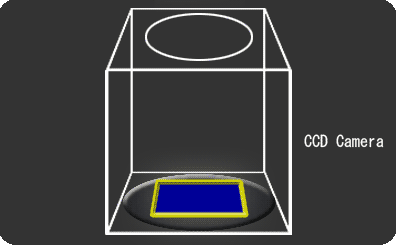
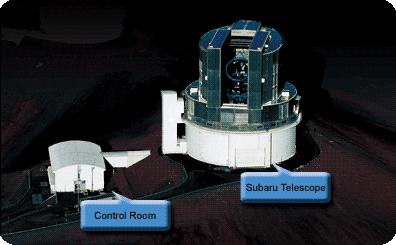

What is a focus for telescopes? What kinds of foci are there?
A focus is a point where light rays that enter the telescope converge. A camera is mounted at the focus to collect data. While a refracting telescope, like the ones Galileo Galilei used, has 1 focus, multiple foci can be created at different points by combination of reflecting mirrors for reflecting telescopes, such as the Subaru Telescope. We make effective use of those features for observations.
《Focal points of the Subaru Telescope》
The Subaru Telescope has 4 focal points: 1 prime focus, 1 Cassegrain focus, and 2 Nasmyth foci.

- The prime focus : the first point where the primary mirror directly brings light to a focus. It is suitable for capturing a wide field of view all at once.
- The Cassegrain focus : the point where another mirror (the secondary mirror) brings the light from the primary mirror to a focus. It is commonly used for detailed observations.
- The Nasmyth focus : the point where the tertiary mirror redirects the light from the secondary mirror to the side of the telescope. Because it is positioned at the platform which remains stationary in the altitude direction, serves as a place to mount a large science instrument.
How far can the Subaru Telescope see?

Galaxy at distance of 13.1 billion light-years, detected by the Subaru Telescope
Where can we view images of astronomical objects captured by the Subaru Telescope?
Some of the latest images captured by the Subaru Telescope can be viewed at Subaru Gallery on our official website. Do you have a favorite image there?

Orion Nebula, located about 1,500 light-years away from Earth
How many people are working at the Subaru Telescope?
About 100 members of staff are working at the Subaru Telescope on the Big Island of Hawai‘i. Their nationalities are diverse, hailing from Hawai‘i, Japan, the mainland of the U.S.A., and France.
Subaru Telescope and Mid-level facilities

Entrance of the Hilo Base Facility for Subaru Telescope
What skill set do I need to work for the Subaru Telescope?
Researchers working for the Subaru Telescope underwent training at graduate school for several years after graduating from university to become a researcher. To become a professional astronomer doing astronomical research through observation, you need to have good understanding of the broad range of fields, including motion and nature of objects and how light travels, namely physics and chemistry.
If you want to become an engineer operating a telescope or developing a new camera, you need to be well-versed in mechanics, electrical engineering, and computer skills. A good background in math and science are necessary prerequisites.
Not only astronomers and engineers work at the Subaru Telescope, but many other kinds of people with different backgrounds work together. Since the Subaru Telescope is located in Hawai‘i, most types of jobs require communication skills in English.
Featured careers
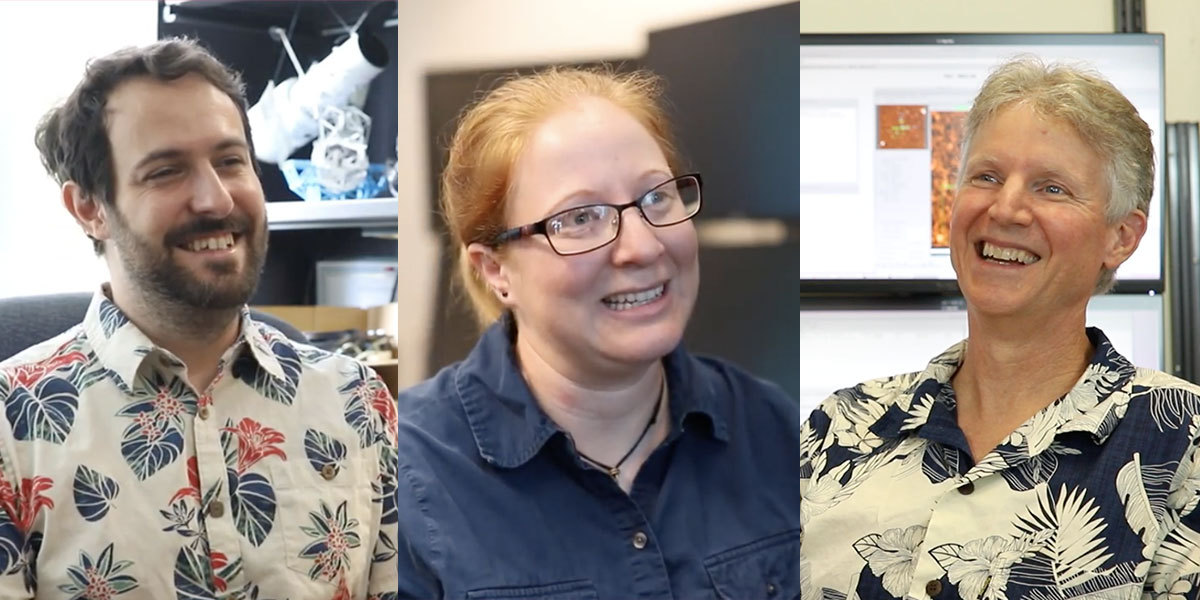
Can I visit the Subaru Telescope in Hawai‘i?
You must be at least 16 years old to go to the upper elevations of Maunakea, where the Subaru Telescope is situated. The atmosphere, which carries barely half the oxygen of sea level, may be harmful to health of children and teens under 16 years of age.
Visiting Subaru Telescope

Which telescope is better, the Hubble Space Telescope or the Subaru Telescope?
But when it comes to the size of telescope, ground-based telescopes excel. They can be built bigger than space telescopes. For example, while the Hubble Space Telescope’s primary mirror is 2.4 m in diameter, the Subaru Telescope has an 8.2 m primary mirror (for the section that gathers light). This large mirror makes the Subaru Telescope advantageous for collecting enough light and analyzing details from a faint object. In addition, with techniques to correct distortions of light that travels through the air, ground-based telescopes achieve sharper images, comparable to those captured by space telescopes.

Copryright: Hubble Space Telescope
What are differences between the Subaru Telescope and a radio telescope?
A variety of electromagnetic waves reaches us from the Universe. Different telescopes are designed to suit various kinds of lights (electromagnetic waves). As its name suggests, a radio telescope is a telescope for collecting radio waves. Radio telescopes observe different astronomical objects from what optical telescopes including the Subaru Telescope observes in visible and infrared lights.
Roughly, objects in higher temperatures can be detected in visible light, while those in lower temperatures can be observed in radio waves. Objects in between those temperatures are captured in infrared light. For example, an optical telescope is suitable for observing stars, whereas a radio telescope is good at detecting gas clouds from which new stars may form. Other kinds of light (electromagnetic waves) exist, such as gamma rays, X-rays, and ultraviolet.
Observations through these various kinds of light will lead to our fundamental understanding of the Universe.
What are differences between the Subaru Telescope and other telescopes?
More than 10 telescopes that observe visible light and infrared have primary mirrors of 8 to 10 m in diameter. Among them, the Subaru Telescope has one of the largest single-piece primary mirrors (there are 8.1 to 8.4 m primary mirrors for other telescopes).
What makes the Subaru Telescope stand out from the rest of the large telescopes is that it can mount a camera on the prime focus. This key feature enables it to capture a wide field of view all at once. This is one of the strengths that make the Subaru Telescope far surpass other telescopes in performance.

Laser beam coming from Subaru Telescope’s enclosure
When did Earth form? How will Earth end?
Earth formed around 4.6 billion years ago, the same time the Sun and the rest of the planets in the Solar System formed.
Our understanding of the Universe has not reached a degree to say with certainty about how Earth will end. In one scenario, the Sun would evolve into a red giant near the end of its life and expand large enough to engulf Earth. Other scientists say that Earth would quietly orbit the Sun which would become a faint white dwarf surviving the red giant phase of the Sun. There are other theories as well.
The Subaru Telescope closely observes and investigates different phases of a star's evolution from beginning to end; from formation to expansion into a bloated, large star called a red giant, to finally a state of luminous white ash called a white dwarf. This research is expected to provide information for predicting the future of the Sun and Earth more precisely.
![[Observation result] Record breaking distant Solar-System object, discovered by the Subaru Telescope (February 10, 2021)](_src/34858/ciao_db.jpg)
Image of the star expelling its outer layers at the end of its life, and leaving the small white dwarf (image of the planetary nebula BD+303639, captured by the Subaru Telescope)
What is the farthest object in the Solar System?
The most distant planet in the Solar System is Neptune, which is 30 times father from the Sun than Earth is.
Smaller than planets, many astronomical objects have been found at greater distances than Neptune. These objects that are farther out than Neptune in the Solar System are collectively called Trans-Neptunian objects. Observations have found more objects that are over 100 times as far as from the Sun as Earth.
The Subaru Telescope studies the entire Solar System by discovering distant, small astronomical objects and measuring changes in their brightness. Please check our website to see our discoveries of distant astronomical objects.
[Observation result] Record breaking distant Solar-System object, discovered by the Subaru Telescope (February 10, 2021)
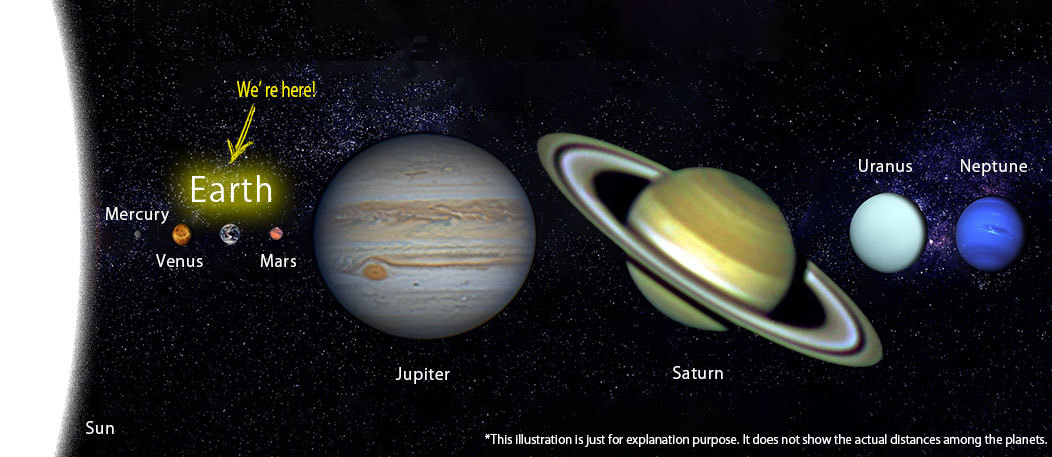
The Subaru Telescope and other observations are detecting more small bodies that exist beyond Neptune’s orbit.
Are there planets around other stars?
Observations suggest many stars other than the Sun are accompanied by planets (exoplanets). As far as confirmed, thousands of stars are orbited by planets. Large planets like Jupiter are easy to detect, but recent studies revealed that there are exoplanets that are relatively small as well, like Earth.
The Subaru Telescope has observed stars beyond the Solar System through its high-resolving power, which led to discovery of planets around them. It also conducts research to detect exoplanets by investigating changes in motion of their stars caused by effects of the planets.
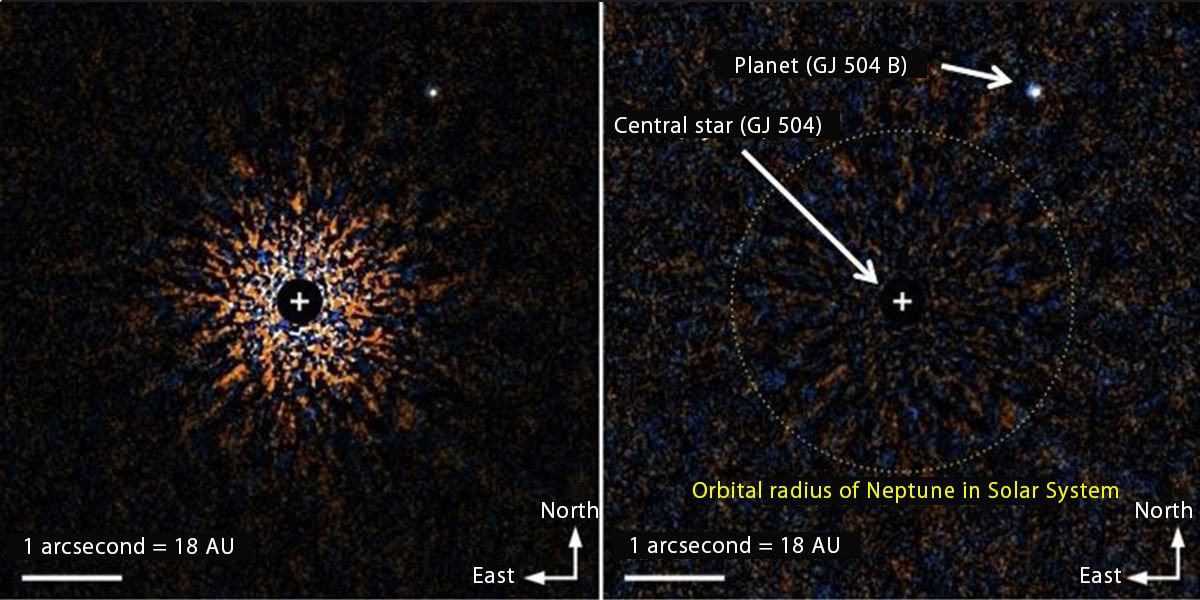
The Subaru Telescope discovered the planet (GJ 504 B) orbiting the star (GJ 504) beyond the Solar System. It successfully suppressed the bright light from the central star by hiding the light through a science instrument, and captured the image of the faint planet.
Who named the constellations?
The patterns of stars seen in the night sky have been named after people, animals, and other things since ancient times across the world, which gave birth to what are known as the constellations. There are 88 constellations in the present star map officially recognized by an association of astronomers worldwide called the International Astronomical Union (IAU).
Stars within a constellation that are bright or vary in brightness are assigned letters from various alphabets in addition to their constellation names, such as α (Alpha) Orionis. Some small galaxies called dwarf galaxies, adjacent to the Milky Way Galaxy, are named after their constellation names. One of them is the Ursa Minor Dwarf. Astronomers do not usually concern themselves with the names or concepts of the constellations, but may mention them when referring to certain stars in those constellations in their research papers.
How many stars are there in the Universe?
The Milky Way Galaxy is believed to contain over 100 billion stars. This figure is not a result of counting every star in our Galaxy, but an estimate based on the entire Galaxy’s mass and the mass of an ordinary star. (We have only completed a survey of about 1 billion stars for their accurate locations, distances, and motions.)
Astronomers estimate there are several hundreds of billion galaxies in the Universe, including the Milky Way Galaxy. This means the total number of stars in the Universe should be equivalent to 100 billion (the number of stars per galaxy) times several hundreds of billion (the number of galaxies in the Universe). That is a number that is hard to comprehend!
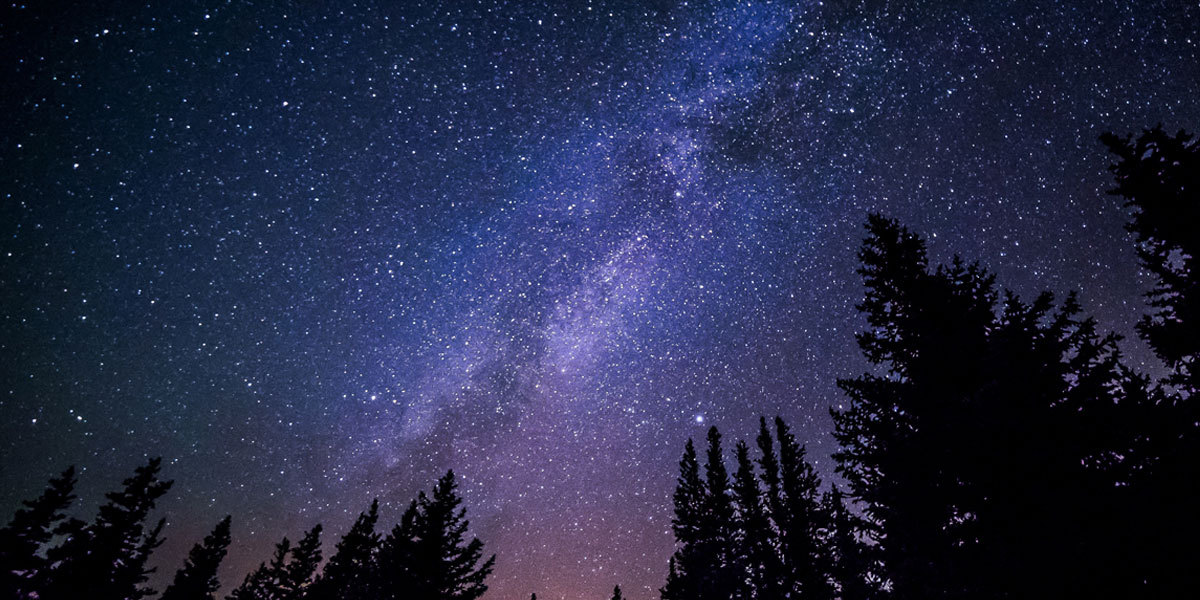
Do stars have life and death?
Stars are formed from massive clouds of gas in space called molecular clouds. In some parts of the Milky Way Galaxy, new stars are continuously born. The Orion Nebula is a well-known birthplace of stars, where stars of different masses begin to shine.
Stars change their appearances over the course of time. Some stars die in a spectacular explosion. Low-mass stars, such as our Sun, do not explode, but instead as gases rush away from the surface, they eventually shrink into small, faint stars called white dwarfs, which are the final stage of those low-mass stars.
The Subaru Telescope investigates how stars and surrounding planets form by observing star-forming regions such as the Orion Nebula in the infrared light.

Infrared image of the Orion Nebula, where stars form
What happens when stars die?
How a star dies depends on its mass.
More massive stars than the Sun undergo a large-scale explosion called a supernova at the final stage of their lives, with most of their components blown away. Gas and dust (small particles) are scattered across space through the aftermath of a supernova. Some of this stardust eventually makes other stars. The remnants of the stellar core which are left after the supernova shrink into a small astronomical objects (either a black hole or a neutron star).
A low-mass star like our Sun does not explode, but gradually expels the gas from its outer layers until the core is left to become a small object called a white dwarf. The substances thrown out from the star also fill space as gas and dust. Some of the ejected gas forms a glowing planetary nebula.
The Subaru Telescope observes supernovae and planetary nebulae to reveal what kind of substances are ejected from dying stars and what effects they have on their surroundings.
*In this article, the death of a star refers to the stage when stars are no longer self-luminous bodies that shine by generating energy internally through nuclear fusion. When stars “die,” white dwarfs, neutron stars, and black holes are left behind, so we can say they transform into new astronomical objects instead of saying “stars die.”

The Crab Nebula is a supernova remnant (Messier 1)
Do stars vary their own brightness?
While stars, including the Sun, hardly change their brightness over time, some stars drastically vary their brightness for short cycles of a few hours to a year. They are called variable stars.
Most variable stars fluctuate their luminosity by swelling and shrinking. One of the famous variable stars is Mira (Omicron Citi). Its brightness perceived by human eye varies by 8 magnitudes (more than 1,000 times) for a short timescale of less than a year.
Stars change their structure over the course of time, gradually changing their luminosity. Astronomers estimate the Sun will become thousands of times brighter several billion years from now. Some stars significantly change their luminosity as their internal structures change. In particular, a swelling red giant drastically changes its luminosity just over a few decades during transition into a white dwarf by expelling substances from its outer layers.
The Subaru Telescope investigates the evolution of stars and substances expelled during the evolution.
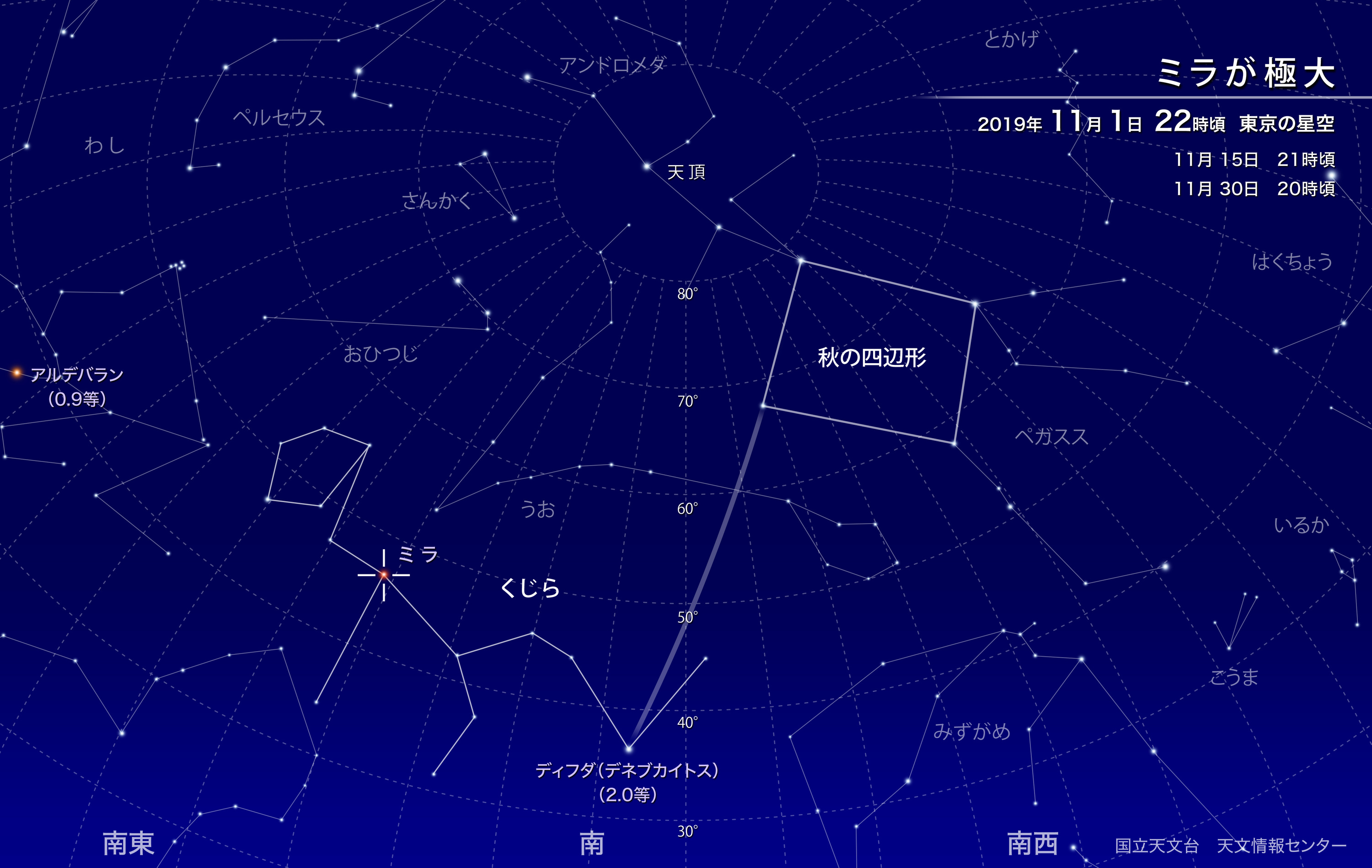
“Stargazing information: Look for Mira in the constellation Cetus” (only in Japanese) https://www.nao.ac.jp/astro/sky/2019/11-topics01.html
What is a black hole?
A black hole is a small but enormously massive astronomical objects, and in its place, the gravity is so strong that nothing can get out of there. Once anything gets into a black hole, not even light or radio waves can escape the powerful pull of the black hole.
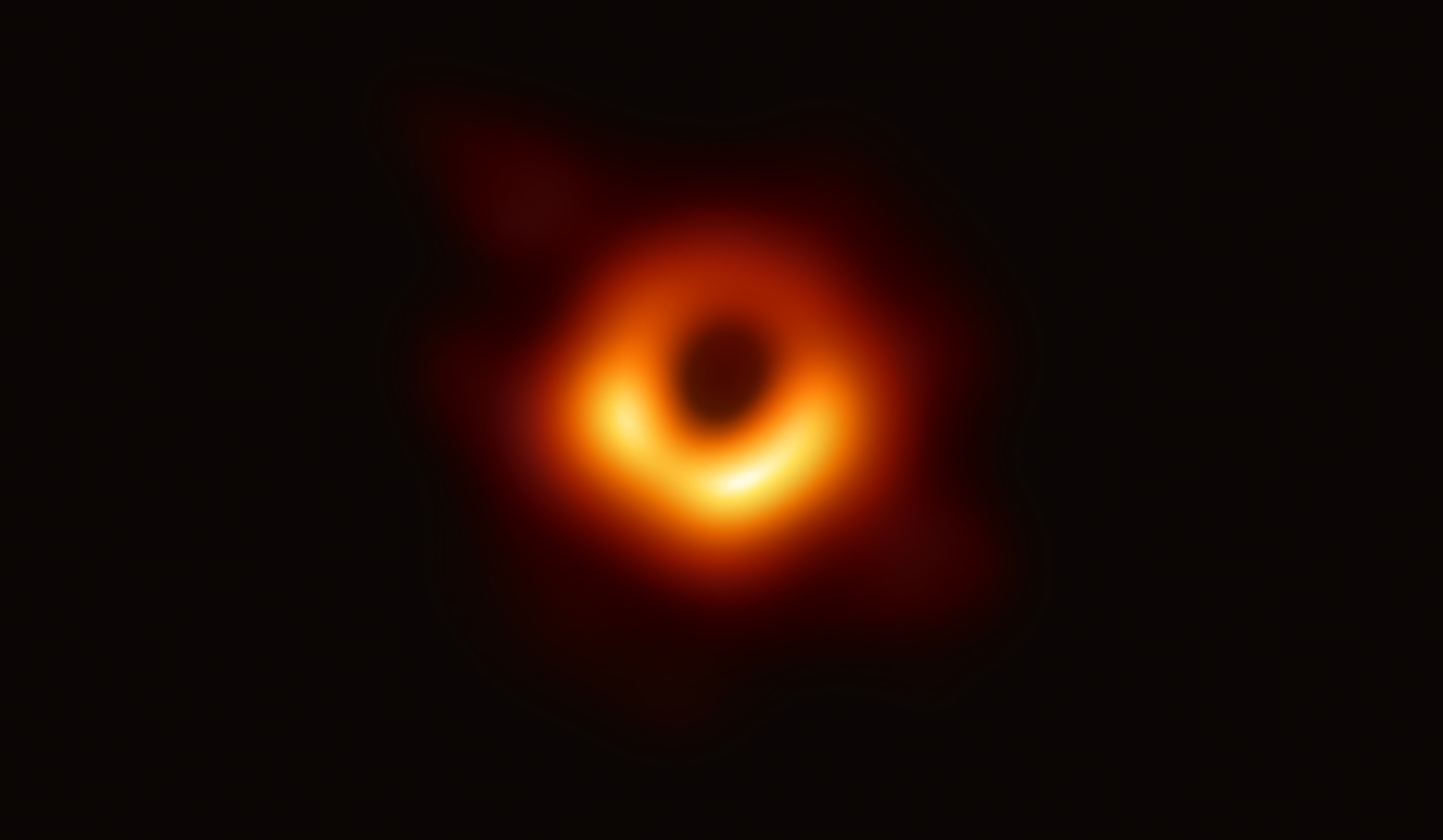
A network of radio telescopes detected a region where no light can reach due to the strong gravity of a black hole whereas its surrounding objects are luminous. (Credit: EHT Collaboration)
How do black holes form? What happens at the final stage of black holes?
However, scientific evidence indicates that far more massive black holes than ordinary stars, like a supermassive black hole at the center of a galaxy, are formed in distinctly different ways. Astronomers are investigating
how those black holes are formed. A black hole, with 4.3 million times the mass of the Sun, was discovered at the center of the Milky Way Galaxy. Further studies found another galaxy harbors a black hole which is 1 billion times more massive than the Sun. Our current understanding is that black holes swallow matter from their surroundings and grow bigger, but those supermassive black holes are extremely heavy, and cannot be accounted for solely by this theory.
The Subaru Telescope investigates black holes through detection of gigantic black holes and research on relationship with galaxies with them. Theoretically, black holes “evaporate” at their final stage as they lose mass over a long period of time. Because it takes an extraordinarily long time for the evaporation, we still have not had a direct glimpse of the process or effect.

The Subaru Telescope discovered the the galaxy that contains the black hole lying 13.05 billion light-years away from Earth (the red dot at the arrow point). (Credit: NAOJ)
How do you find black holes that are invisible?
Black holes do not give off their own light. But there are astronomical objects like gas and dust nearby, which orbit around black hole. This rotation induces centrifugal force which hinders them from collapsing into the black hole so easily. So by detecting a black hole’s effect on other matter nearby, we can infer the presence of a black hole and determine its mass and other things.
Tracking of stars’ motions at the center of the Milky Way Galaxy showed some of the stars follow elliptical paths. From the orbital motions, scientists found that a black hole dwells at the heart of them, and that it has approximately 4.3 million times the Sun’s mass. The Subaru Telescope as well closely focuses on these stellar motions to study the black hole and its surroundings.
When gases around a black hole at the center of a galaxy reach a high temperature, they become extremely luminous enough for us to detect even some billions of light-years away. This phenomenon is called a quasar. The Subaru Telescope is actively involved in this research.

Artist impression of a quasar. (Credit: Yoshiki Matsuoka)
When and how was the Universe created?
Recent studies have found the Universe was formed 13.8 billion years ago, originating from a tiny dot in a state of a very hot fireball. This theory of the origin of the Universe is called the Big Bang. There are 3 pieces of evidence for the Big Bang theory.
First, the entire Universe is expanding. Conversely, the Universe was much smaller in the past, which must have been ultimately a small point at the beginning, as explained in the Big Bang theory.
Second, some radio waves coming from the Universe in all directions have nearly uniform intensity. This radiation is called the cosmic microwave background. The Big Bang theory explains that the early Universe was extremely hot and opaque to light. About 380,000 years after the Universe was formed, the Universe then cooled down, making it possible for light to travel in straight lines through the Universe. The theory predicts this light fills the entire Universe, and can be detected as radio waves. The cosmic microwave background can be explained by the Big Bang predictions in this way.
Third, the Big Bang theory predicts that hydrogen and helium were formed in a 3:1 ratio, by weight. The elemental composition of helium and hydrogen in the current Universe measured for many stars and nebulae is nearly identical to the above ratio, which also supports the Big Bang theory.
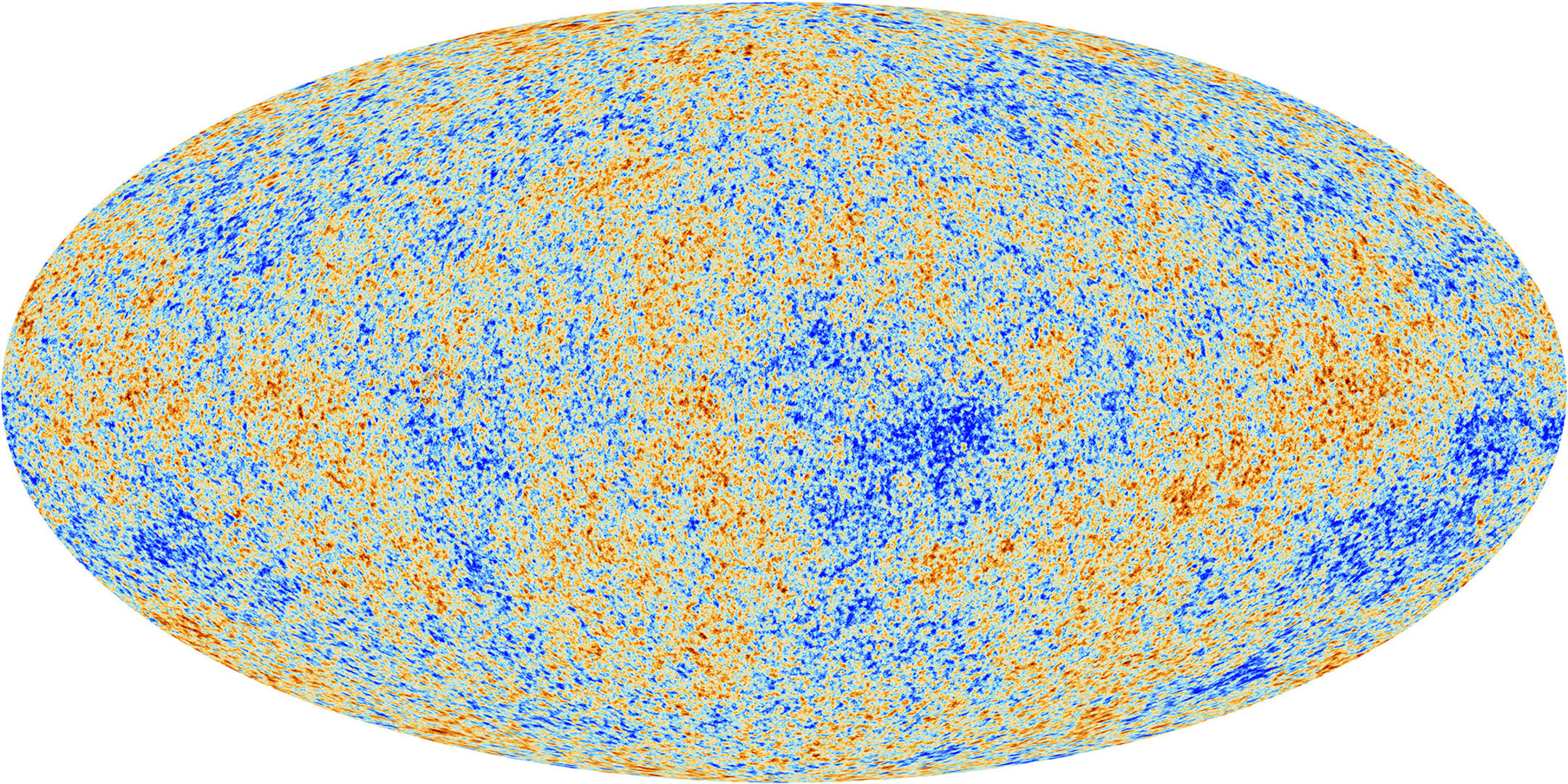
Cosmic microwave background seen by the Planck space telescope (provided by ESA)
How large is the Universe? How much of the Universe have we discovered?
The Universe is believed to have very quickly expanded in the very early stage and have become enlarged significantly.
Our Universe is defined as the region where light can reach for a period of 13.8 billion years since the beginning of the Universe. We can say this distance is “13.8 billion light-years,” but the distance for the expanding Universe is defined in several different ways, which results in different figures to express the distance. The Universe could actually be spreading out far beyond that sphere, but we currently have no way to directly measure it, since that light has not reached us yet.
The most distant astronomical objects ever discovered, which is a galaxy, is situated at the distance light can travel for 13.4 billion years. In other words, we are presently witnessing the light emitted by the galaxy merely 400 million years after the beginning of the Universe. The Subaru Telescope has been a workhorse for discovering many distant astronomical objects.
But all the distant objects discovered so far are the ones which emit strong light. It is very hard to observe even nearby objects if they produce faint light. In addition to studying these distant objects, the Subaru Telescope is
exploring astronomical objects at a variety of different distances, such as stars in the Milky Way Galaxy and small Solar System bodies.

Distant galaxies discovered by the Subaru Telescope (indicated by white circles)
What is the Universe made of?
Stars, nebulae, planets, and other objects that compose the Universe are made of the same elements as things on Earth. Elements mean hydrogen, oxygen, iron, and other substances. Although the elements are common, the difference is that the most abundant elements on Earth are oxygen, iron, and silicon, whereas stars and nebulae are dominantly made of hydrogen and helium. This is because Earth lost most of its hydrogen and helium when it formed.
Astronomers can learn what elements an astronomical object is composed of by analyzing the light. As light is a combination of different colors, light emitted by an astronomical object contains many colors. A difference in elements contained in an astronomical object results in different intensities of particular colors when observed. Based on this, we can identify elements contained in the object. The Subaru Telescope utilizes a science instrument called a spectrometer for research on elements of astronomical objects.
A little understood material named dark matter is thought to make up most of the mass of the Universe. It is nonluminous, has mass, exerting the gravitational pull of normal matter. Astronomers estimate its amount (mass) is several times as much as normal matter, and that it is an essential component for forming galaxies, but they have yet to discover clues to identifying it. The Subaru Telescope detects as many distant galaxies as possible and determines their locations to reveal insights into the distribution and amount of dark matter.
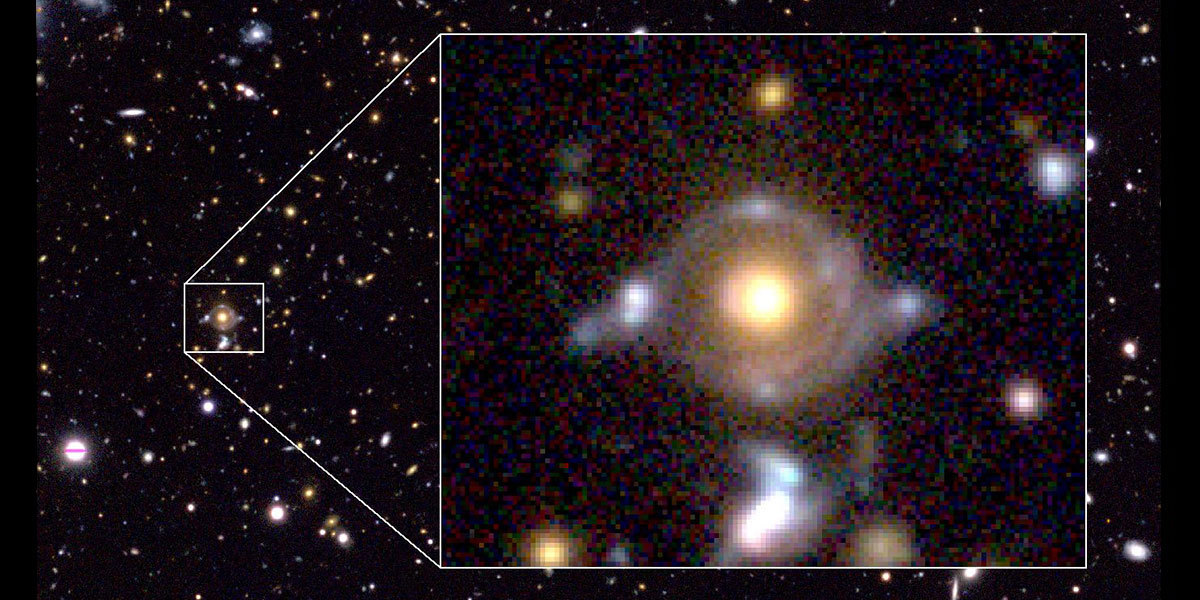
most of the mass of the Universe.
How will the Universe end?
The Universe continues to expand. Observations even suggest that the expansion is gradually accelerating. Gravity induced by all matters in the Universe, most of which are dark matter particles, should slow this expansion, but the expansion is rather speeding up. So astronomers hypothesize some kind of energy is working to repulse the gravity and drive this acceleration. This energy is given a name, dark energy, but its identity is a complete mystery.
Will the Universe continue to expand? Will it stop expanding and begin to shrink? Or will the expansion increase? We have no definite evidence to answer them. Aiming to shed light on the riddle of dark energy, we need to figure out why the present expansion of the Universe continues by looking into every detail of how it has been expanding up until now. The Subaru Telescope probes many galaxies located at different distances to illuminate how the Universe is expanding.

Dark matter map, with contour lines showing the amount (density) of dark matter. This map is based on images and analysis of astronomical objects observed by the Subaru Telescope.
Is there life beyond Earth?
We have not found evidence that there is life in any places other than Earth. Discovering evidence of life is one of the major missions for astronomers.
Liquid water may exist (or may have existed in the past) in Mars and some moons of Jupiter and Saturn, which raise our expectations for the presence of life there. As spacecrafts can probe astronomical objects if they are in the Solar System, we may find life there in the near future.
Many exoplanets have been discovered besides the Solar System, some of which are similar in size to Earth. With a closer look into the surfaces of those planets, they may have molecular oxygen, methane, and other substances that could support life forms. Large distances to other stars prevent spacecrafts from getting close to them, but observations have confirmed there are many stars that have planets orbiting around them, which will one day provide clues to unveiling how many astronomical object host life in the Universe, or whether Earth or the Solar System is an exceptional place for harboring life.
Have you ever thought about what constitute life? This is a very tough question. Our knowledge about life is only limited to life on Earth, but unimaginable types of life forms may exist somewhere in the Universe. Thinking about life beyond Earth enlarges our sense of wonder about the Universe.
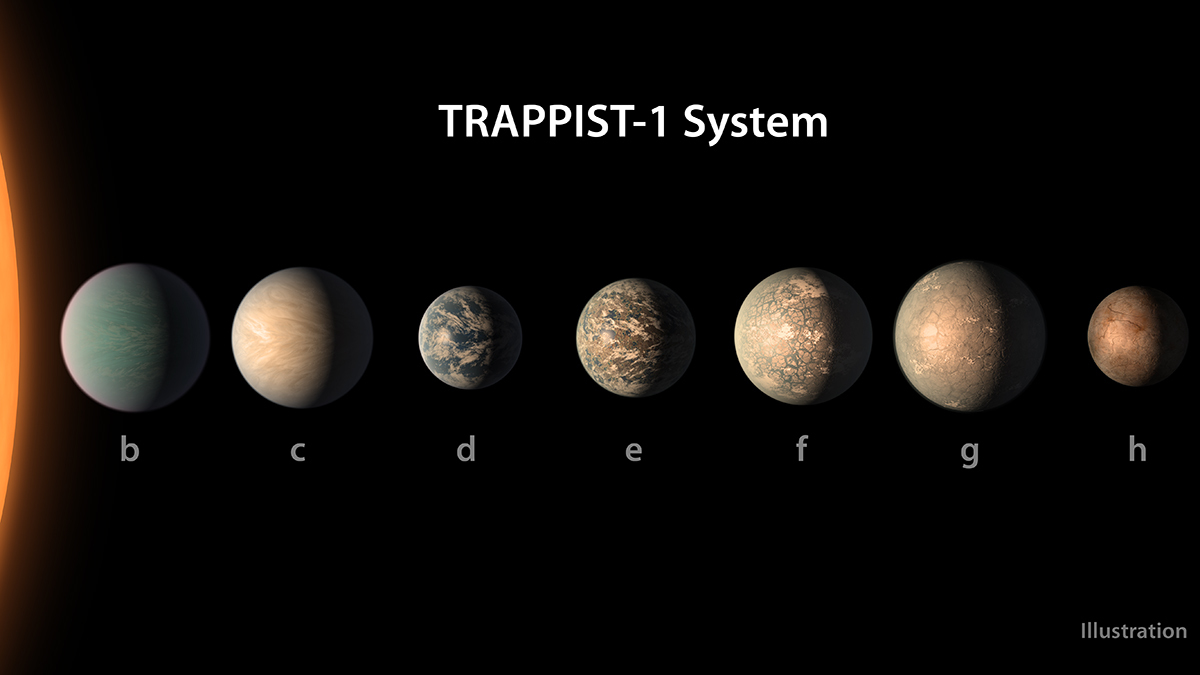
As many as 7 Earth-sized planets have been found around a star called TRAPPIST-1 beyond the Solar System. Observations suggested some of the planets may have liquid water on their surfaces. *Note that the patterns of planets were made out of an artist’s impression. (Credit: NASA)
Can we live on another planet?
We can travel to astronomical objects in the Solar system, like Mars. But their environments are very different from Earth’s, which will make it extremely difficult for humans to live there.
Recent observations have discovered planets that orbit stars besides our Solar System, some of which may have similar characteristics to Earth. However, those exoplanets are so much farther away than the ones in the Solar System that it would take decades or hundreds of years to reach there even at the speed of light. It would take well beyond the human life span if you traveled in a currently available way.

This artist’s view shows the first exoplanet discovered, 51 Pegasi b. The discovery was announced by a team of Swiss astronomers in 1995. The image provided by ESO/M. Kornmesser/Nick Risinger was trimmed to create this view. (Credit: ESO/M. Kornmesser/Nick Risinger, CC-BY 4.0)



